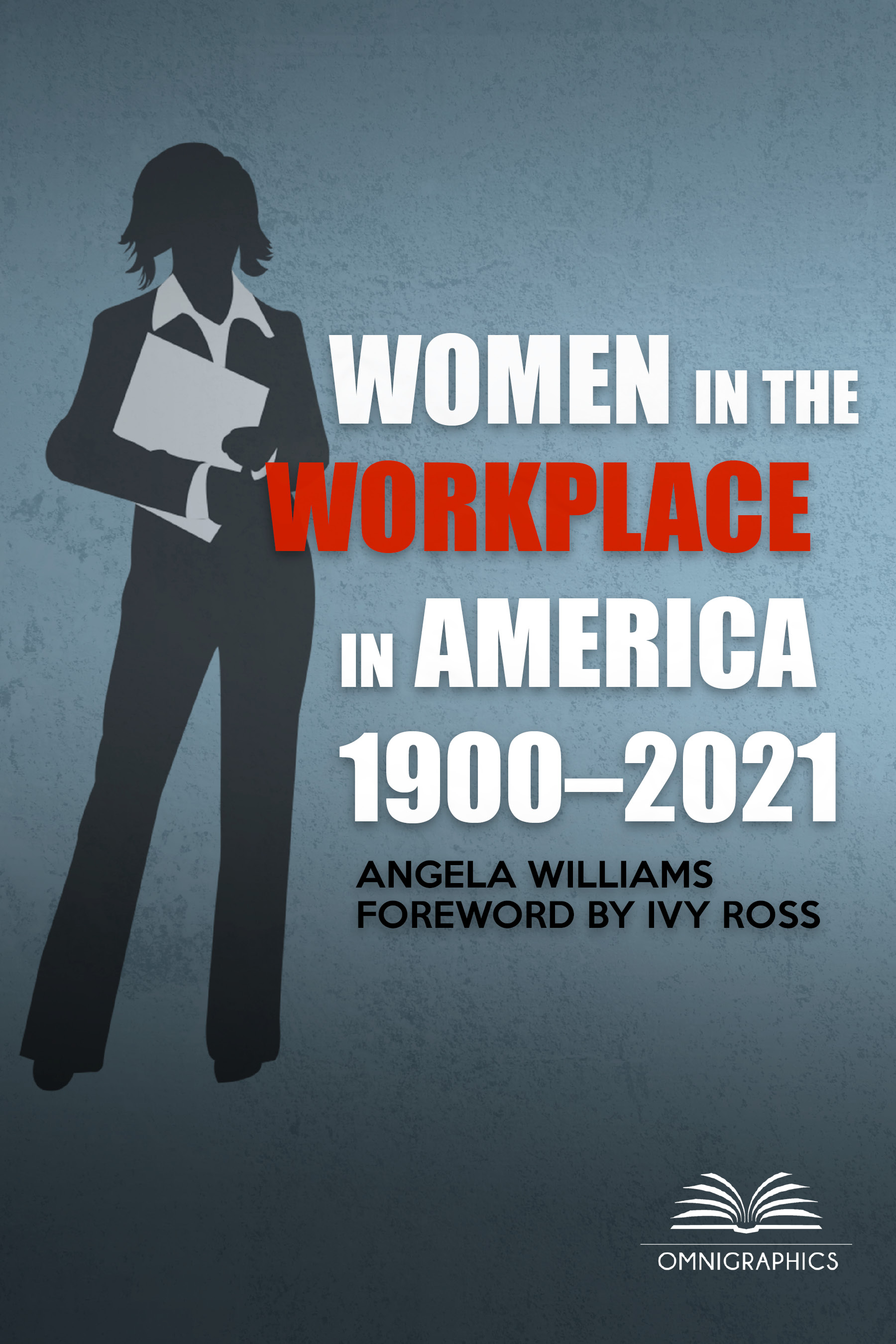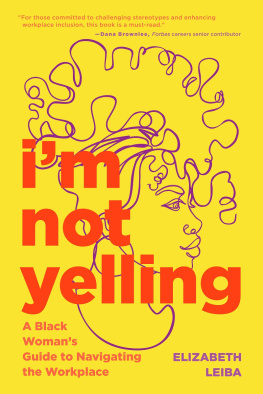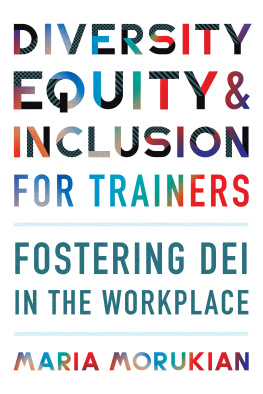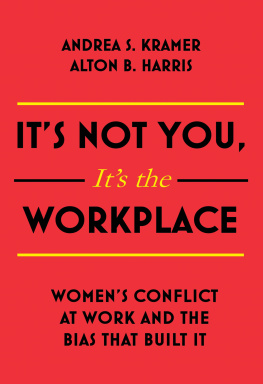Angela L. Williams - Women in the Workplace in America, 1900-2021
Here you can read online Angela L. Williams - Women in the Workplace in America, 1900-2021 full text of the book (entire story) in english for free. Download pdf and epub, get meaning, cover and reviews about this ebook. year: 2021, publisher: Omnigraphics, genre: Politics. Description of the work, (preface) as well as reviews are available. Best literature library LitArk.com created for fans of good reading and offers a wide selection of genres:
Romance novel
Science fiction
Adventure
Detective
Science
History
Home and family
Prose
Art
Politics
Computer
Non-fiction
Religion
Business
Children
Humor
Choose a favorite category and find really read worthwhile books. Enjoy immersion in the world of imagination, feel the emotions of the characters or learn something new for yourself, make an fascinating discovery.

- Book:Women in the Workplace in America, 1900-2021
- Author:
- Publisher:Omnigraphics
- Genre:
- Year:2021
- Rating:5 / 5
- Favourites:Add to favourites
- Your mark:
- 100
- 1
- 2
- 3
- 4
- 5
Women in the Workplace in America, 1900-2021: summary, description and annotation
We offer to read an annotation, description, summary or preface (depends on what the author of the book "Women in the Workplace in America, 1900-2021" wrote himself). If you haven't found the necessary information about the book — write in the comments, we will try to find it.
A resource guide providing historical context for the challenges, opportunities, and success stories of women in the American workplace. This title support interests in career pursuits and programs in Womens Studies, Diversity and Inclusion, American History, Cultural Studies and Social Science.
Angela L. Williams: author's other books
Who wrote Women in the Workplace in America, 1900-2021? Find out the surname, the name of the author of the book and a list of all author's works by series.
Women in the Workplace in America, 1900-2021 — read online for free the complete book (whole text) full work
Below is the text of the book, divided by pages. System saving the place of the last page read, allows you to conveniently read the book "Women in the Workplace in America, 1900-2021" online for free, without having to search again every time where you left off. Put a bookmark, and you can go to the page where you finished reading at any time.
Font size:
Interval:
Bookmark:

Women in the Workplace
in America, 19002021
Bibliographic Note
Because this page cannot legibly accommodate all the copyright notices, the Bibliographic Note portion of the Preface constitutes an extension of the copyright notice.
* * *
OMNIGRAPHICS
Pearline Jaikumar, Managing Editor
Angela L. Williams, Editorial Director
Sue Maniloff, VP, Business Development
Kevin Hayes, VP, Operations
* * *
Copyright 2021 Omnigraphics
ISBN 978-0-7808-1957-3
E-ISBN 978-0-7808-1958-0
Library of Congress Control Number: 2021937007
Electronic or mechanical reproduction, including photography, recording, or any other information storage and retrieval system for the purpose of resale is strictly prohibited without permission in writing from the publisher.
The information in this publication was compiled from the sources cited and from other sources considered reliable. While every possible effort has been made to ensure reliability, the publisher will not assume liability for damages caused by inaccuracies in the data, and makes no warranty, express or implied, on the accuracy of the information contained herein.

This book is printed on acid-free paper meeting the ANSI Z39.48 Standard. The infinity symbol that appears above indicates that the paper in this book meets that standard.
Printed in the United States
I dont say womens rights I say the constitutional principle of the equal citizenship stature of men and women.
U.S. Supreme Court Justice Ruth Bader Ginsburg
Table of Contents
Foreword
Finally, theres a reference book that tells the story of women in the workplace. It is an epic of struggle and triumph, passion and determination. Each working woman plays a part in this historical narrative, including me.
I was born in the 1950s and raised in the Bronx. My mother was a violinist in an orchestra when she was in her twenties but her career as a musician ended when she married my father, an industrial designer who worked with the esteemed Raymond Loewy, who was known as the man who shaped America. Our home, which my father had designed, was made of industrial materials which were considered cutting edge for their time. He taught me, at an early age, how to see things beyond what they appeared to be. Through his eyes, I learned what creativity is. Whenever he saw me take an interest in something a new material or a particular type of tool he would encourage me to create with it. Ultimately, my father taught me that design is about solving problems for humanity.
When I applied to colleges, I told him I wanted to follow in his footsteps and attend a design school. Imagine my shock when he said, Oh, Ivy, marry someone rich, be a schoolteacher and have your summers off. I recall thinking, How dare you rob me of my dreams! My mother would later tell me that she saw my determination to become the designer he inspired me to be. Hearing this from her resonated deeply. I can remember that after she and my dad would fight, when I was growing up, she would retreat to her closet, where she cried over yellowed newspaper articles about the violin recitals she gave as a young woman, and tearfully regret never following her dream to be a professional musician. I felt her sadness then and determined to live a life of no regrets.
Over my career, I have been fortunate to be a design leader in a variety of consumer categories, ranging from apparel and accessories to toys and technology. Some of my designs have been collected by museums and Ive received many honors, most recently being named in Fast Companys One Hundred Most Creative People in Business. But what I find most rewarding about my work is enabling each of my team members to realize their full potential.
Today I am a vice president at Google, heading the hardware design team. It was a long hard climb to get there, battling discrimination, overcoming preconceived notions about what women are capable of. Too often I have been the only woman in the room where decisions are made. I wish Women in the Workplace in America, 19002021 had come out forty years ago when I was beginning my own career. I wouldnt have felt so alone but seen myself as part of a continuum of progress as I read about the experiences and achievements of trailblazing women like Mary Jackson, the first Black female engineer at NASA; and Frances Perkins, the Architect of the New Deal; and Margaret Chase Smith, the first woman to serve in both houses of Congress; and more than a hundred others profiled in these pages.
Women in the Workplace in America, 19002021 is a trailblazer in its own right. In these pages, you will be inspired as I have been by the stories of women you know and many you may not have heard of, from the Radium Girls, young factory workers who ingested radioactive radium causing them to glow in the dark, to the Guerrilla Girls, a group of female artists challenging sexism in the art world. All of them deserve our attention. To read about the myriad things they had to battle in every field is to realize how far we have come but also how much further we have to go. This book reminds us that women in every generation have been called to show up as themselves, speak their truth, and expand the consciousness of the workplace. This is necessary now more than ever. If we continue this legacy, we will help solve some of the most complex problems of our time. Whether you are entering the workforce or have been part of it for decades, I hope you will find Women in the Workplace informative and motivating. Its on the shoulders of the women you are about to meet that you and I stand tall.
Ivy Ross
Vice President of Design for Hardware Products
Authors Note
In Colonial America, the English common-law concept of coverture defined women as the property of men, as chattel, with no legal identity except through him. These women did not exist as far as the law was concerned.
The hidden figures who spent their careers calculating trajectories and mathematical formulas for NASA very nearly didnt exist either, at least not in a way that acknowledged the important contributions they made to our nations space program. We know their names, contributions, and stories today because a woman whose father told her about these trailblazing mathematicians was curious enough to research them and the segregated building where they made their calculations.
Would these human computers have received public recognition if she hadnt written that popular book? Would a building be named after one of them, as one is now?
After all these years of so many womens contributions not being valued or recorded, we have to wonder.
The official American narrative provides us with the names and faces of Americas official heroes, but contributions from too many women and people from marginalized populations often remain below the surface, require mining.
Thats why youll find so many previously invisible women featured in these pages. We amplify their names and the contributions they made, in part, because women have always worked in this country, but have not always received credit for that work.
Yet we all need role models; we all need to learn the full story.
And these trailblazers deserve to have their inspirational stories heard.
This book includes anonymous millworkers captured in grainy photographs, suffragists who understood that women required representation before they could gain autonomy, woman warriors whose names appear in war documents, a trailblazing new vice president so many working women are represented here through the years. We hope you find these women and their stories as compelling as the workplace data we offer to help you contextualize womens experiences in the American workplace over time.
Font size:
Interval:
Bookmark:
Similar books «Women in the Workplace in America, 1900-2021»
Look at similar books to Women in the Workplace in America, 1900-2021. We have selected literature similar in name and meaning in the hope of providing readers with more options to find new, interesting, not yet read works.
Discussion, reviews of the book Women in the Workplace in America, 1900-2021 and just readers' own opinions. Leave your comments, write what you think about the work, its meaning or the main characters. Specify what exactly you liked and what you didn't like, and why you think so.





